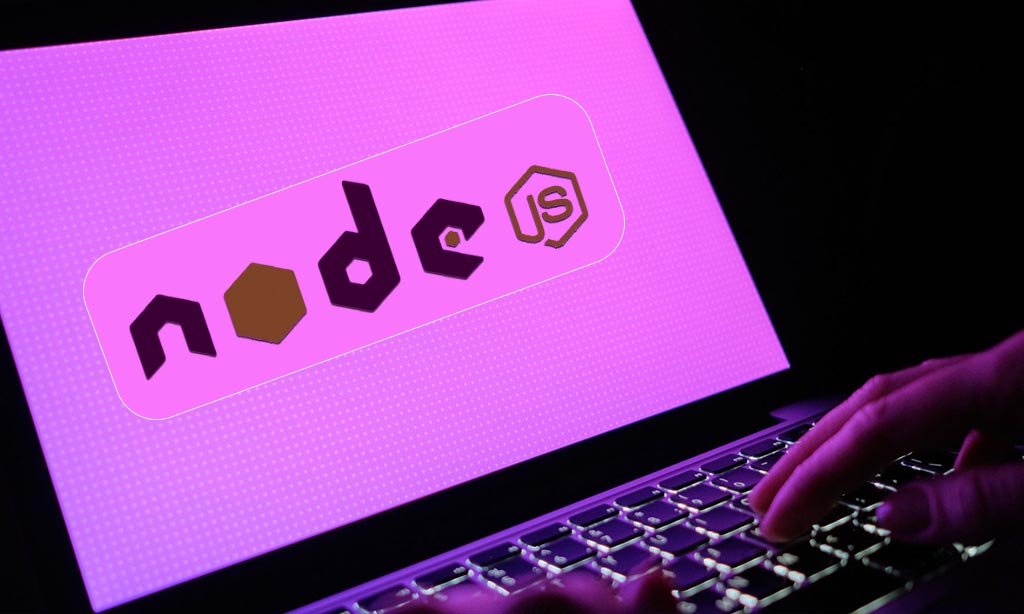In the world of modern web development, backend programming languages play a critical role in powering the logic, database interaction, and server-side functionality of applications.
Whether you’re working on a web application, mobile app backend, or an enterprise-level system, the backend language you choose determines factors such as speed, scalability, security, and maintainability.
With the plethora of options available today, understanding which backend programming languages excel in different areas can be overwhelming. This article will compare the 7 Best Backend Programming Languages Compared, offering detailed insights into the strengths, weaknesses, and use cases of each language.
By the end, you’ll have the information needed to make a well-informed decision for your next development project.
What is a Backend Programming Language?
A backend programming language is designed to manage and process the data of a web application or service, typically running on a server. The backend is responsible for handling requests from the frontend (what users see), interacting with databases, managing authentication, and applying business logic.
The key to a smooth user experience lies in how efficiently the backend handles these tasks, which is why choosing the right programming language is essential.
Why Choosing the Right Backend Language Matters?
Choosing the right backend language impacts the entire software development lifecycle. The language affects how easily a team can build and maintain the project, how well the system can scale as traffic grows, and how securely data is handled.
Additionally, the choice of language may affect future development timelines, integration with third-party tools, and team capabilities. In this article, we will explore the 7 best backend programming languages compared, examining their strengths and weaknesses to help you select the best one for your next backend development project.
Criteria for Comparing Backend Languages
When evaluating backend languages, we look at several factors:
- Performance: How efficiently the language handles requests and concurrent processes.
- Developer Ecosystem: The support from the language’s community, frameworks, and libraries that make development easier.
- Learning Curve: How easy it is to learn and get started with the language.
- Scalability: The ability of the language to handle growth as the application scales.
- Security: The language’s support for securing sensitive data and protecting against vulnerabilities.
Now, let’s dive into the 7 Best Backend Programming Languages Compared, with in-depth analyses of each language.
Top 7 Backend Programming Languages
Let’s take a look for the top 7 backend programming languages in 2025.
1. Python
Python has earned a reputation as one of the most popular and versatile backend programming languages. Known for its simplicity and readability, Python is an excellent choice for developers of all skill levels. It’s especially favored by startups and research-driven teams because of its ability to build robust backend systems rapidly.
Python shines in data-driven applications, automation, and machine learning due to its extensive library ecosystem and developer-friendly syntax. Frameworks such as Django and Flask further enhance Python’s efficiency for web backend development.
Key Features of Python for Backend Development
- Readable Syntax: Python’s clean and simple syntax reduces development time, making it ideal for quick prototypes and scalable production applications.
- Extensive Libraries: With frameworks like Django and Flask, Python offers built-in tools for building secure, database-driven web applications.
- Versatility: Python can be used for everything from web development to machine learning, making it a great all-around language for backend development.
Python Use Cases in Backend Development
Python is widely used in fields like web development, machine learning, data science, and automation. Some key examples include:
- Web Development: Frameworks like Django and Flask make it easy to build powerful web applications quickly.
- Machine Learning and AI: Python’s integration with machine learning libraries like TensorFlow and scikit-learn makes it a go-to language for AI-driven backend services.
Pros and Cons of Python
| Pros | Cons |
| Easy to learn and use | Slower performance compared to compiled languages |
| Large community and ecosystem | Can be less efficient in high-concurrency environments |
| Strong support for data science | Not ideal for CPU-bound applications |
Practical Example:
A great example of Python’s backend capabilities can be seen in Instagram. Initially built with Python using Django, Instagram successfully scaled to handle millions of users with minimal server-side issues, thanks to Python’s scalability.
2. Java
Java has long been a cornerstone of backend development, particularly for enterprise-level applications. Its reliability, portability, and large developer ecosystem make it a go-to choice for large-scale systems. Java’s strong typing and object-oriented approach provide a solid foundation for building complex backend systems that require a high level of stability.
Why Java is a Popular Choice for Backend Systems
- Platform Independence: Java is known for its “write once, run anywhere” philosophy. With the Java Virtual Machine (JVM), Java code can run on any platform without modification.
- High Performance: Java provides strong memory management and garbage collection mechanisms, making it suitable for large-scale applications that need to handle a large amount of data or users.
Java Frameworks for Backend Development
Java offers several robust frameworks that simplify backend development:
- Spring Framework: A comprehensive and flexible framework that supports everything from simple web applications to complex enterprise solutions.
- Hibernate: An object-relational mapping (ORM) tool that streamlines database operations and makes working with databases more efficient.
Pros and Cons of Java
| Pros | Cons |
| High performance and scalability | Verbose syntax, can lead to longer codebases |
| Robust ecosystem and community | Slower development speed due to strict structure |
| Ideal for large applications | Steep learning curve for beginners |
Practical Example:
LinkedIn uses Java extensively on the backend. The platform’s high performance and scalability are powered by Java-based systems, ensuring smooth operation even as user traffic spikes.
3. JavaScript (Node.js)
JavaScript, traditionally known for client-side development, has gained significant traction for backend development through Node.js, a runtime environment that allows JavaScript to be executed server-side. This makes it a versatile language that can be used across both the frontend and backend, allowing developers to use one language for the entire stack.
The Rise of JavaScript in Backend Development
- Asynchronous and Event-Driven: Node.js excels at handling multiple simultaneous requests efficiently, making it ideal for real-time applications such as messaging systems, collaborative platforms, and live data feeds.
- Unified Language: Since JavaScript is used for both the frontend and backend, it allows developers to share code and libraries between client and server-side applications.
Benefits of Node.js in Backend Applications
Node.js is popular for building highly scalable, event-driven applications. It’s often used for:
- Real-Time Web Applications: Node.js is perfect for applications that require real-time data transfer, such as chat apps and live updates.
- APIs: With its non-blocking I/O architecture, Node.js is highly effective for building RESTful APIs and microservices.
Pros and Cons of Node.js
| Pros | Cons |
| High scalability with non-blocking I/O | Callback hell can make code harder to maintain |
| Unified language across frontend and backend | Single-threaded model can limit CPU-intensive tasks |
| Great for real-time applications | Less mature than some other backend languages |
Practical Example:
Netflix utilizes Node.js on the backend to handle millions of users and high traffic. Node.js’s event-driven architecture helps the platform deliver smooth, uninterrupted video streaming to users around the world.
4. Ruby
Ruby is known for its simplicity and productivity, especially when used with the Ruby on Rails framework. It prioritizes convention over configuration, making it a fantastic choice for rapid development. Ruby is often preferred by startups and small teams due to its ease of use and the speed with which developers can build and deploy applications.
Why Ruby is Known for Rapid Development
- Convention Over Configuration: Ruby on Rails comes with a set of conventions that simplify the development process by reducing the need for repetitive configuration.
- Elegant Syntax: Ruby’s syntax is clean and concise, allowing developers to write less code and build applications faster.
Ruby on Rails: A Framework for Backend Success
Ruby on Rails provides a full-stack framework that allows developers to focus on writing business logic rather than spending time on repetitive tasks. Features like database migrations, built-in testing, and automated code generation make it a great tool for quick backend development.
Pros and Cons of Ruby
| Pros | Cons |
| Rapid development and easy to maintain | Slower performance compared to Java or C# |
| Ideal for startups and MVPs | Less scalable for extremely large applications |
| Highly readable code | Ruby on Rails can become bloated for large apps |
Practical Example:
GitHub was originally built with Ruby on Rails, which enabled rapid development of its initial features. While the platform has evolved, Ruby on Rails played a pivotal role in GitHub’s early success.
5. PHP
PHP has long been associated with web development, particularly in the context of content management systems (CMS) like WordPress. It’s a general-purpose language that powers much of the internet, with a particular focus on web pages and dynamic content.
PHP in Web Development and Content Management Systems
- Integration with MySQL: PHP is tightly integrated with MySQL, which makes it an excellent choice for building data-driven websites and applications.
- Rich Ecosystem: PHP has a large number of frameworks, libraries, and tools available, including Laravel, Symfony, and Zend Framework.
Benefits and Popular Frameworks for PHP
PHP frameworks help streamline development, automate tasks, and improve code quality. Laravel is one of the most popular PHP frameworks, known for its elegant syntax and comprehensive feature set.
Pros and Cons of PHP
| Pros | Cons |
| Excellent for CMS-driven sites | Can result in messy, unorganized code if not structured properly |
| Highly compatible with databases | Not suitable for performance-heavy applications |
| Large community and resources | Often criticized for inconsistent syntax and structure |
Practical Example:
Facebook initially relied on PHP for its backend, using a PHP derivative called HipHop for performance improvements as the platform scaled. PHP’s flexibility and widespread adoption were key factors in Facebook’s early development.
6. C#
C# is a statically-typed, object-oriented programming language developed by Microsoft. It is commonly used with the .NET framework for building backend applications, particularly those in the enterprise ecosystem.
How C# Powers Microsoft’s Backend Solutions
- Microsoft Integration: C# integrates seamlessly with other Microsoft tools and platforms, including Azure, SQL Server, and Visual Studio.
- Cross-Platform Development: With .NET Core, C# now supports cross-platform development, enabling developers to build backend services for Windows, Linux, and macOS.
C# Frameworks and Tools for Development
- ASP.NET Core: A high-performance, cross-platform framework that allows developers to build scalable web APIs and dynamic websites.
- Entity Framework: A popular ORM tool that simplifies database operations and integrates seamlessly with C# code.
Pros and Cons of C#
| Pros | Cons |
| Strong integration with Microsoft stack | Less flexible for non-Microsoft environments |
| High performance and scalability | Smaller community compared to JavaScript or Python |
| Excellent for enterprise applications | Steeper learning curve for beginners |
Practical Example:
Stack Overflow uses C# and ASP.NET for its backend, benefiting from the performance, reliability, and scalability of the C#/.NET ecosystem.
7. Go (Golang)
Go (or Golang) is a statically-typed, compiled language designed at Google. It is renowned for its simplicity, speed, and excellent concurrency support. Go is ideal for building high-performance backend services and is becoming increasingly popular in microservices architecture.
The Benefits of Go for High-Performance Backend
- Concurrency: Go’s goroutines provide a simple yet powerful way to manage concurrency and parallelism, allowing the language to handle thousands of concurrent processes without significant overhead.
- High Performance: As a compiled language, Go offers performance that’s comparable to C and C++, making it ideal for applications where speed is critical.
Use Cases for Go in Backend Development
Go is widely used for:
- Microservices: Go’s lightweight and efficient concurrency model makes it ideal for building distributed microservices.
- Cloud Applications: Many cloud-based services, such as Kubernetes, are written in Go due to its scalability and high-performance characteristics.
Pros and Cons of Go
| Pros | Cons |
| Excellent performance due to compilation | Limited support for object-oriented programming |
| Efficient concurrency handling | Smaller ecosystem compared to languages like Python |
| Simple syntax and strong typing | Learning curve for developers new to the language |
Practical Example:
Docker, the popular containerization platform, is written in Go. Its lightweight nature and ability to handle high concurrency are key reasons why Go is favored for cloud-native applications like Docker.
Comparing the 7 Best Backend Programming Languages
Backend performance is often measured in terms of speed and the ability to handle concurrent tasks efficiently. Below is a quick comparison of these languages based on their performance:
| Language | Performance | Best For |
| Python | Moderate | Rapid development, data science |
| Java | High | Enterprise applications |
| Node.js | High | Real-time applications |
| Ruby | Moderate | Rapid prototyping |
| PHP | Moderate | Content-heavy websites |
| C# | High | Enterprise systems |
| Go | Very High | High-performance backend |
Developer Community and Ecosystem
A strong developer community provides valuable resources, tools, and frameworks. Let’s see how each language compares in terms of community and ecosystem support:
| Language | Community Size | Ecosystem Support |
| Python | Very Large | Extensive libraries (Django, Flask) |
| Java | Very Large | Strong, enterprise-level frameworks (Spring, Hibernate) |
| Node.js | Large | Rich npm ecosystem, real-time libraries |
| Ruby | Moderate | Rails and growing ecosystem |
| PHP | Very Large | Large community, CMS frameworks (WordPress, Laravel) |
| C# | Large | Microsoft-focused tools and libraries |
| Go | Growing | Strong support for cloud-native apps |
Wrap Up
The 7 Best Backend Programming Languages Compared showcase the diverse strengths and applications of each language. Whether you’re building an enterprise-level application with Java or Go, creating a real-time system with Node.js, or quickly prototyping with Python or Ruby, there is a backend language that suits your needs.
Your choice will depend on factors like the project’s complexity, your team’s expertise, and the specific performance requirements.
By carefully evaluating each language’s features, performance, scalability, and developer ecosystem, you can select the best backend language that ensures long-term success and maintainability for your application.













































